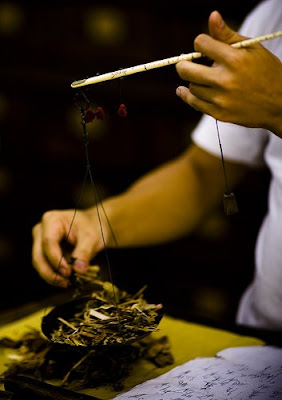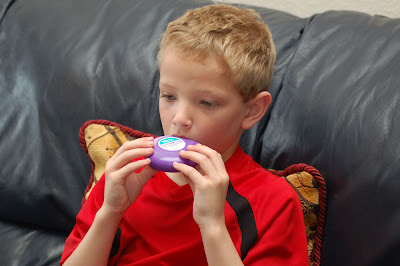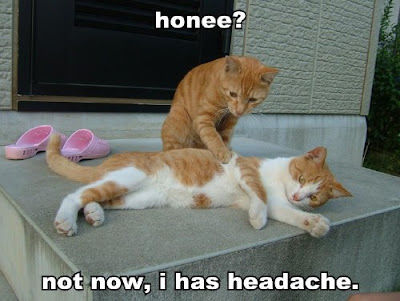
Everyday Health is taking the next two weeks off. Enjoy your holidays, whatever they might be, and have a great new year! We'll see you on January 1st!


Not to be confused with qigong, the traditional Chinese discipline of circulating energy within the body, "tree-gong" is rooted in the Tao Te Ching (a classic Chinese philosophy text) and ancient Chinese principles of energy flow, said Ms Law's instructor, Mr Thomas Kwan.
The 50-year-old said that the energy from plants and trees aids the human body in "getting rid of 'congestion' that makes us feel unwell".

The once-slim Chinese nation, kept thin by poverty and communist policies in the 20th century, is now on the fast track to a U.S.-style obesity crisis.


Words of truth are not beautiful;
Beautiful words are not truthful.
The good do not argue;
Those who argue are not good.
The wise are not extensively learned;
The extensively learned are not wise.
The Sage is not mean.
Simply doing things for others he feels greater fulfillment.
Simply giving to others he feels he has gained more.
The Tao of heaven benefits and does not harm.
The Tao of the Sage is to accomplish without competing.
Words to trust are not refined.
Words refined are not to trust.
Good men are not gifted speakers.
Gifted speakers are not good.
Experts are not widely learned;
The widely learned are not expert.
Wise rulers for themselves keep naught,
Yet gain by having done for all.
Have more for having freely shared;
Do good not harm is heaven's Way;
The wise act for and not against.


Battlefield acupuncture has been especially effective among patients suffering from a combination of combat wounds, typically a brain injury or severed limbs, burns and penetrating wounds along with severe disorientation and anxiety.
But neither does acupuncture provoke the kind of adverse side effects, allergic reactions and potential addiction associated with powerful psychotropic drugs often used to dull the pain of the severely wounded.
"This is one of the fastest pain attenuators in existence - the pain can be gone in five minutes," said Niemtzow, a physician, acupuncturist and senior adviser to the Air Force surgeon general.
"We use acupuncture as an adjunct" to traditional therapy, said Niemtzow. "The Chinese have used it for 5,000 years. It works, and it's powerful."
"Acupuncture has been very helpful for people for whom other treatment has failed," said Lt. Col. Terri L. Riutcel, an Air Force psychiatrist who deployed to Iraq last year where she treated victims of roadside bomb blasts, among other injuries.
Acupuncture "is very well tolerated and there are very few side effects," apart from occasional bruising, she said. "I think it has tremendous potential for military medicine."
Battlefield acupuncture caught the eye of U.S. Army Rangers, who often operate in remote locations. At their invitation, Niemtzow and his team trained some Rangers last summer.
Nonetheless, advocates of the practice recognize that they must overcome skepticism within the ranks of military doctors.
"Oh, sure, some haven't gotten the word," said Burns, the clinic chief. "We are very much ahead of the curve."








| MBA | 2 years | Summers off |
| JD (law degree) | 3 years | Summers off |
| MD | 4 years | Summers off |
| MSTOM (Chinese medicine degree) | 4 years | STRAIGHT THROUGH FOR 4 YEARS!!! |



"Acupuncture is becoming a favorable option for a variety of purposes, ranging from enhancing fertility to decreasing post-operative pain, because people experience significantly fewer side effects and it can be less expensive than other options," Dr. Tong Joo Gan, who led the study, said in a statement.
"This analysis reinforces that acupuncture also is a successful source of relief from chronic headaches."


